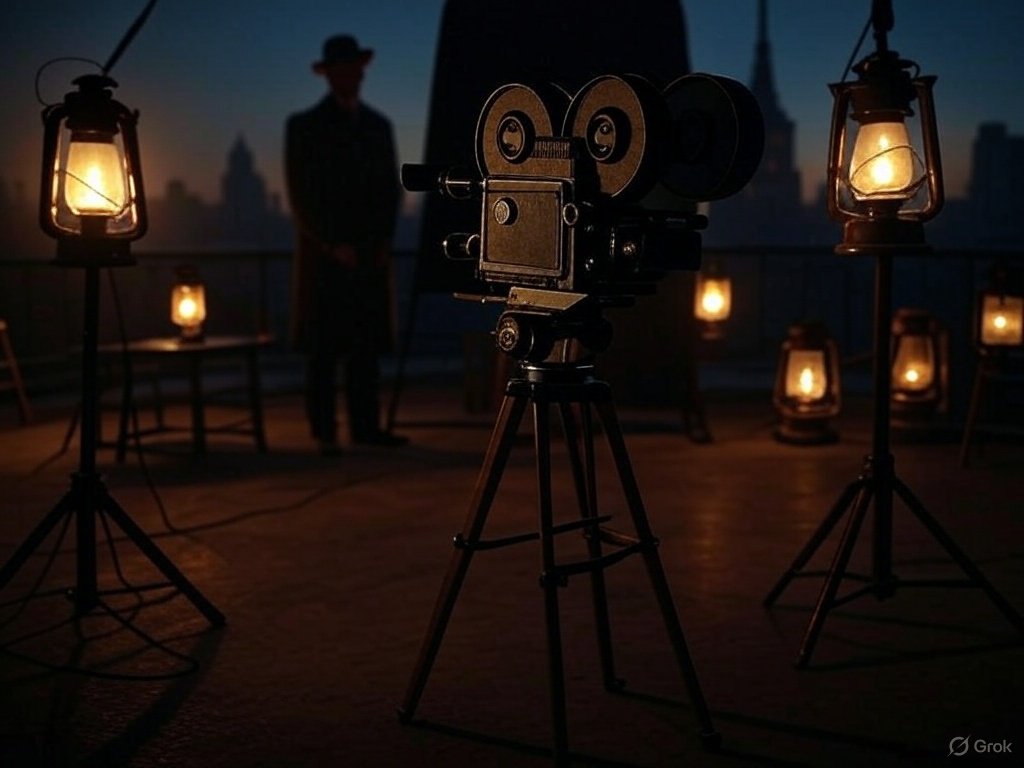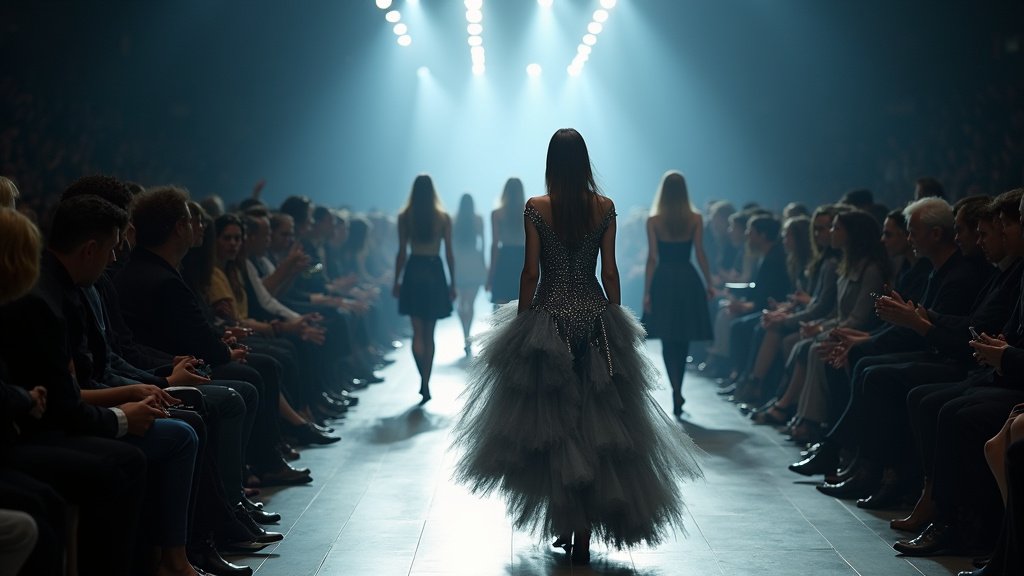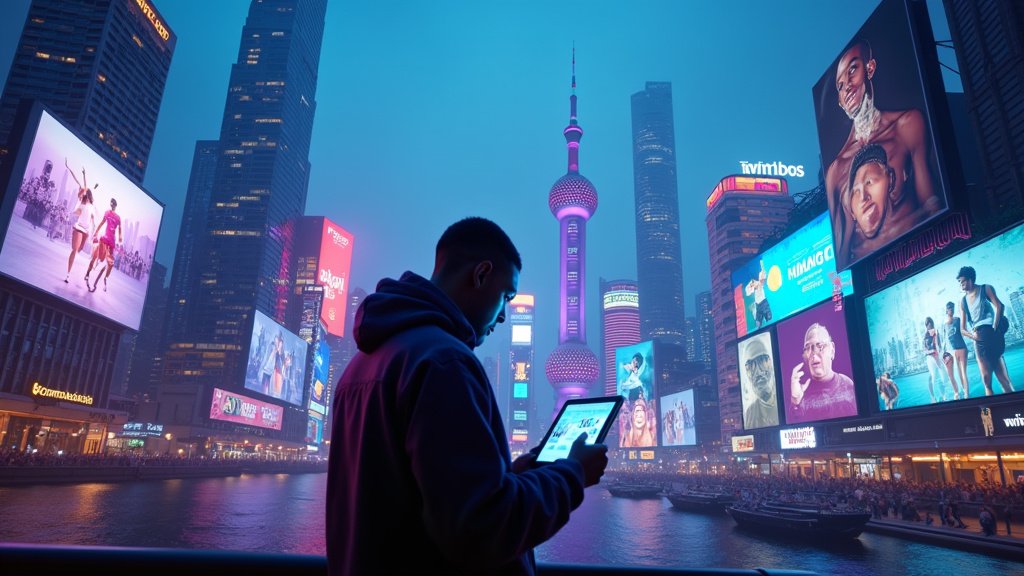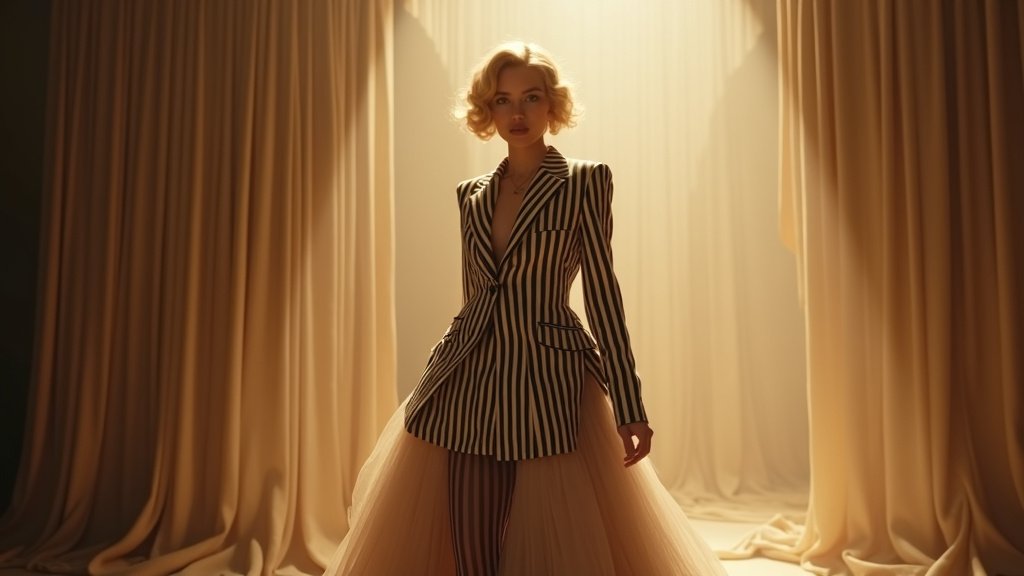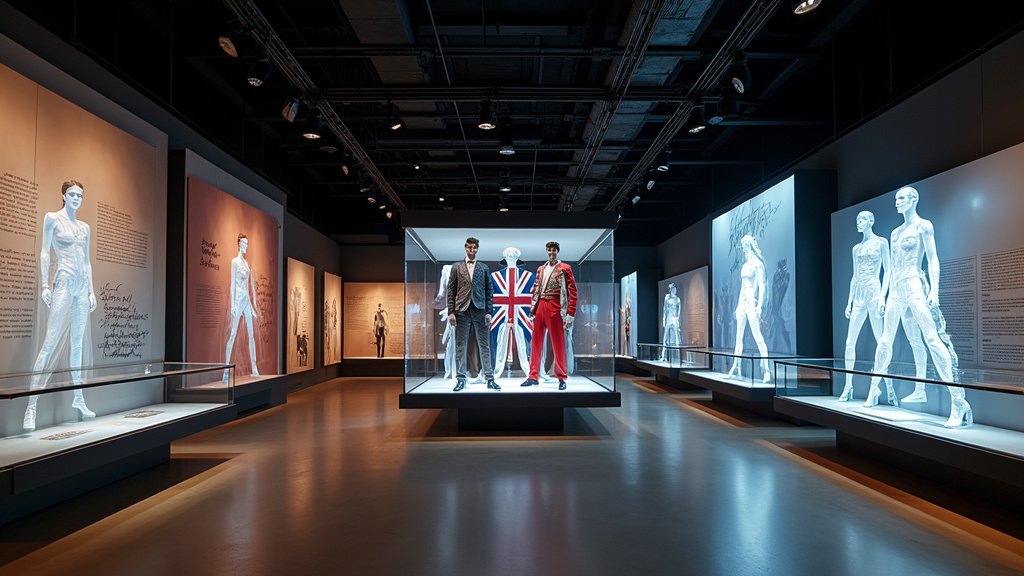In an age of hyperreal CGI and Dolby Atmos surround, it might seem counterintuitive that some of today’s most daring filmmakers are embracing a century-old medium: silent cinema. Yet in 2025, a growing cadre of directors is returning to black-and-white palettes, intertitle-driven narratives, and live orchestral accompaniment—reviving the art form that launched Hollywood. From arthouse festivals to streaming-platform spotlight strands, silent films are making waves by foregrounding visual storytelling, emotional nuance, and audience imagination in ways that dialogue-driven works often cannot. Here’s why the silent-film revival is more than nostalgic homage—it’s a vital re-examination of cinema’s roots and a bold exploration of its future.
1. The Motivations Behind Going Silent
Re-Centering Visual Storytelling
Dialogue can clarify plot and character, but it can also overshadow the power of pure imagery. Modern directors like Aisha Nakamura (Shadows at Dawn, 2023) and Lorenzo Paredes (El Silencio Azul, 2024) argue that silent techniques compel filmmakers to craft more expressive cinematography, artful composition, and nuanced performances. By removing spoken lines, every gesture, lighting cue, and editing cut becomes laden with meaning—inviting audiences to engage their interpretive faculties.
Engaging Global Audiences
In a fragmented streaming landscape, dialogue requires translation, dubbing, or subtitles—adding cost and risking loss of nuance. Silent films transcend linguistic barriers, needing only localized intertitles or subtitle overlays. This universal accessibility makes silent features appealing to international festivals and global platforms eager for shareable, low-localization-content.
Experimentation and Artistic Challenge
For emerging filmmakers, silent cinema offers a sandbox of creative constraints that spur innovation. Without dialogue, they must invent new visual vocabularies—color tinting to signify mood shifts, inventive use of intertitles to blend poetry with exposition, or rhythmic editing synced to original scores. As Sundance alumnus Jade Martinez puts it, “Silence isn’t empty; it’s a canvas.”
2. Contemporary Silent Films and Key Players
Aisha Nakamura’s Shadows at Dawn (2023)
Synopsis: Set in a near-future Tokyo on the brink of ecological collapse, Shadows at Dawn follows a mute parkour messenger racing across neon-lit rooftops to deliver climate data that could save—or doom—the city.
Visual Style: Shot in stark black-and-white with occasional sepia-tinged dream sequences. Nakamura employs high-contrast chiaroscuro lighting, echoing German Expressionist classics.
Score & Presentation: Premiered with a live ensemble combining taiko drums, shamisen, and string quartet—its pulse-pounding rhythms and haunting leitmotifs earned a spot in Toronto’s Luminato Festival.
Lorenzo Paredes’ El Silencio Azul (2024)
Synopsis: A silent love story set aboard a 1930s luxury liner, where a broken violinist and a fortune-seeking heiress forge a wordless romance against the backdrop of a brewing political coup.
Visual Style: Reminiscent of early MGM melodramas, Paredes uses soft-focus optics, iris-in/iris-out transitions, and hand-tinted frames—each color wash signaling emotional shifts.
Score & Presentation: Featured at the Cannes Silent Cinema sidebar, accompanied by a solo pianist improvising on 20th-century salon themes and Latin folk motifs.
Other Notable Modern Silents
- “Doppelgänger” (2025) by Erika Sloan: A psychological thriller in 4:3 aspect ratio exploring identity fragmentation through mirrored set pieces and strobe editing.
- “Memory of Water” (2024) by Arun Kapoor: An allegorical fantasy about drought and memory, using water-color animation overlays instead of spoken narration.
- “City of Lanterns” (2023) by Mei-Ling Zhao: A Hong Kong–shot vignette series showing nocturnal cityscapes in silhouette, punctuated by lyric intertitles adapted from classical Chinese poems.
3. Festivals and Platforms Embracing Silent Cinema
Dedicated Silent Screenings at Major Festivals
- Cannes Silent Sidebar: Since 2022, Cannes has included a Silent Film sidebar, programming three to five contemporary silents alongside classics restored by the Cinémathèque Française.
- Sundance Silent Visions: In Park City, Sundance’s “Silent Visions” strand highlights films that use on-screen text as poetry—winner of 2024’s Audience Award was Echo Light by Ben Okereke.
- BFI London “Silent Rewind”: BFI’s annual month-long program pairs modern silent features with live orchestras at the Southbank Centre, drawing packed houses keen on communal, cinematic rituals.
Streaming Platforms and Niche Channels
- Criterion Channel: Launched “Silent Futures,” a curation of modern silents with scholarly intros and optional intertitle-language tracks.
- Mubi: Acquired digital distribution rights for Shadows at Dawn and El Silencio Azul, marketing them via “Mubi Must-See” lists and director Q&As.
- YouTube Premium Originals: Commissioned a short silent-film anthology—Wordless Worlds—showcasing six global filmmakers each exploring silent language.
4. Technical and Aesthetic Innovations
Intertitle Evolution
Modern silent directors experiment with intertitles far beyond exposition:
- Kinetic Typography: Letters animate on-screen to mirror emotional intensity—rising in size for outcries, dissolving for whispered thoughts.
- Multilingual Overlays: Rapid-fire intertitles in multiple languages scroll subtly in frame borders, allowing diverse audiences to grasp nuance without disrupting pacing.
- Integrated Graphic Design: Some use intertitles as diegetic elements—e.g., hotel neon signs flashing scene-setting text or newspaper headlines morphing into poetic reprises.
Digital Restoration and Creation Tools
- AI-Driven Film Grain Emulation: Software like Argentum replicates authentic 1920s nitrate textures, adding flicker and edge-bleed to digital footage for period authenticity.
- Dynamic Tinting: Color-grading AI tags emotional beats—sunrise, flashback, hallucination—automatically applying period-accurate tinting palettes without manual keyframing.
- Real-Time Score Synchronization: Live performance apps (e.g., VirtuSync) allow musicians to sync digital scores to projected film frames, enabling touring orchestras to accompany silents worldwide with precise cueing.
5. Audience Reception and Cultural Impact
Nostalgia Meets Novelty
Younger viewers, accustomed to rapid visual stimulation, find modern silents’ focus on imagery and pacing both refreshingly meditative and challenging. Post-screening discussions highlight how silence amplifies viewer agency, prompting personal interpretation of character motives and thematic subtext.
Educational and Therapeutic Uses
Film schools now include silent-film modules in screenwriting and cinematography curricula, training students to “show, not tell.” In therapy settings, silent vignettes serve as prompts for emotional projection and discussion, bypassing the distractions of dialogue to focus on nonverbal cues.
Social Media and Virality
Clips of striking silent-film moments—an actor’s expressive close-up, an arresting montage tattooed with animated intertitles—go viral on TikTok and Instagram Reels under hashtags like #SilentCinema2025, sparking mini-trends where amateur creators produce their own wordless short films.
6. Challenges and Criticisms
Accessibility Concerns
While silents transcend spoken language, they rely heavily on visual acuity. Directors address this by:
- Audio Descriptions: Voice-over tracks describe key actions and emotions for visually impaired audiences.
- Adaptive Subtitles: On-screen text transcripts appear in sidebars for the hearing-impaired, ensuring inclusive design.
Balancing Innovation and Pastiche
Critics argue some modern silent films veer into mere pastiche—nostalgic but not substantive. The finest works, however, use silent techniques to explore contemporary themes—climate crises, identity fragmentation, digital surveillance—demonstrating that silence can speak powerfully about the 21st century.
7. The Future of Silent Filmmaking
- Interactive Silent Narratives: Branching intertitles let audiences choose plot directions—an evolution of the choose-your-own-adventure format without spoken dialogue.
- AR-Enhanced Silent Experiences: Viewers point smartphones at the screen to reveal hidden “text bubbles” or visual commentary—layering modern interactivity onto silent backdrops.
- Cross-Disciplinary Collaborations: Silent filmmakers team with choreographers, composers, and graphic designers to create live multimedia performances that unfold concurrently on screen and stage.
Conclusion
The silent-film revival of 2025 isn’t mere retro fetishism—it’s a vibrant reassertion of cinema’s primal power: storytelling through images, movement, and music. By stripping away dialogue, contemporary directors heighten the potency of every visual choice, engage global audiences without language barriers, and spark creative risks that push the medium forward. Whether you’re a cinephile seeking new sensory experiences or a filmmaker hungry for artistic challenge, silent cinema offers a world where every frame matters, and every gesture resonates. As long as there are stories to tell, silence will remain one of film’s most eloquent languages.

